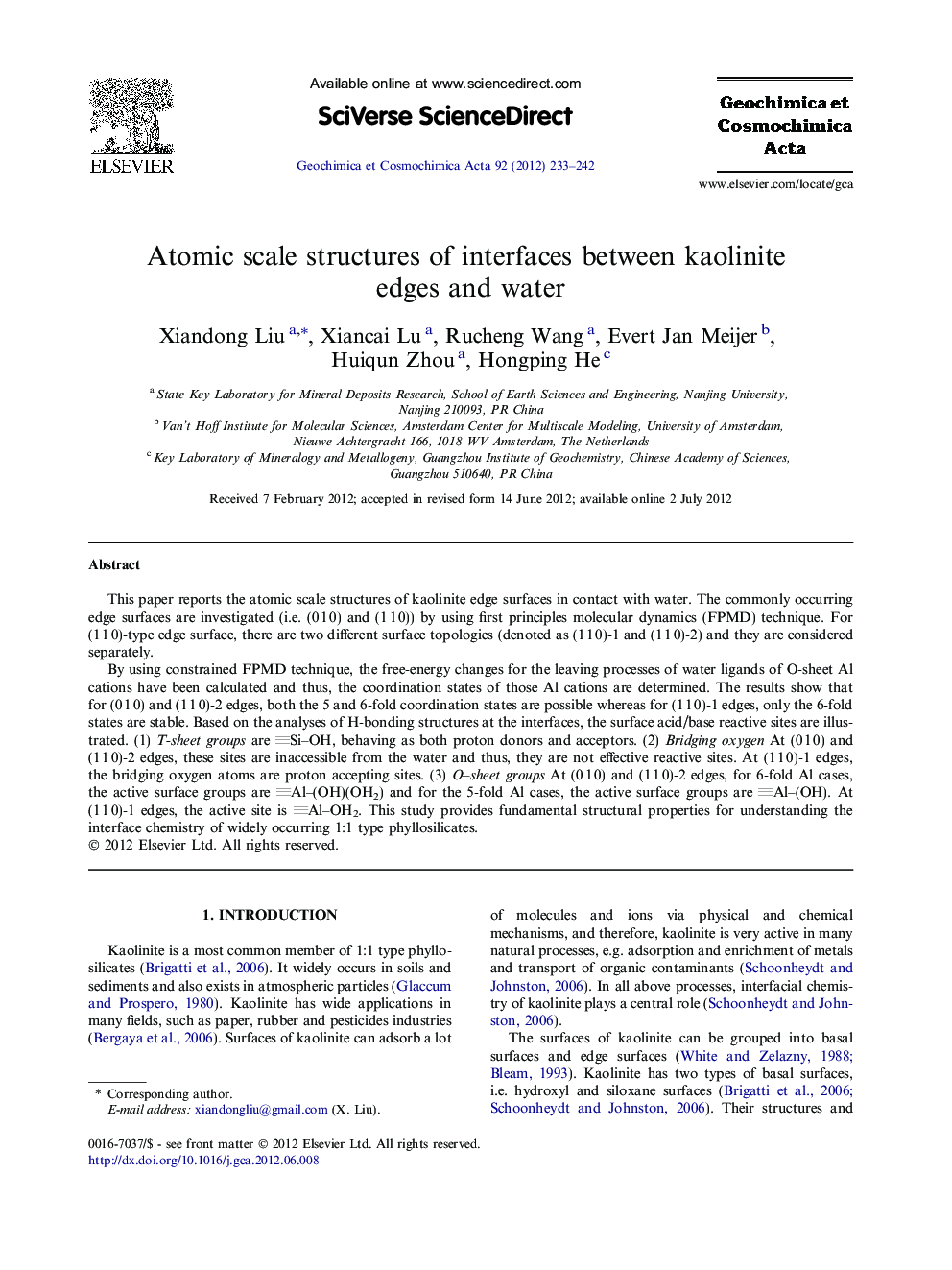| Article ID | Journal | Published Year | Pages | File Type |
|---|---|---|---|---|
| 4702797 | Geochimica et Cosmochimica Acta | 2012 | 10 Pages |
This paper reports the atomic scale structures of kaolinite edge surfaces in contact with water. The commonly occurring edge surfaces are investigated (i.e. (0 1 0) and (1 1 0)) by using first principles molecular dynamics (FPMD) technique. For (1 1 0)-type edge surface, there are two different surface topologies (denoted as (1 1 0)-1 and (1 1 0)-2) and they are considered separately.By using constrained FPMD technique, the free-energy changes for the leaving processes of water ligands of O-sheet Al cations have been calculated and thus, the coordination states of those Al cations are determined. The results show that for (0 1 0) and (1 1 0)-2 edges, both the 5 and 6-fold coordination states are possible whereas for (1 1 0)-1 edges, only the 6-fold states are stable. Based on the analyses of H-bonding structures at the interfaces, the surface acid/base reactive sites are illustrated. (1) T-sheet groups are Si–OH, behaving as both proton donors and acceptors. (2) Bridging oxygen At (0 1 0) and (1 1 0)-2 edges, these sites are inaccessible from the water and thus, they are not effective reactive sites. At (1 1 0)-1 edges, the bridging oxygen atoms are proton accepting sites. (3) O–sheet groups At (0 1 0) and (1 1 0)-2 edges, for 6-fold Al cases, the active surface groups are Al–(OH)(OH2) and for the 5-fold Al cases, the active surface groups are Al–(OH). At (1 1 0)-1 edges, the active site is Al–OH2. This study provides fundamental structural properties for understanding the interface chemistry of widely occurring 1:1 type phyllosilicates.
